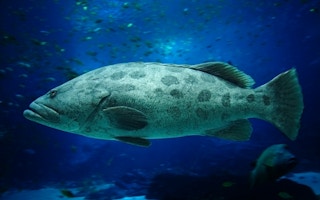There are 11 plastic tanks in total, holding a combined 80,000 litres of salt water. They are full of grouper, a white-fleshed fish, which are all destined to end up on the plates of restaurant-goers across Hong Kong.
This is the scene at Oceanethix, one of the numerous so-called “vertical fish farms” in the special administrative region, which have become a key fixture of its supply chain.
For while most fish farms around the world are at sea, or at least, land level, in Hong Kong it is more often a necessity to put them many floors up in tall buildings.
This is because as one of the most densely populated places in the world, there is simply very little spare space. So fish farms have to fit in where they can.
“
If you like, this is rooftop farming on steroids
Lloyd Moskalik, managing director of Oceanethix
For the small firms that dominate the industry, it is worth the effort, as Hong Kong has an insatiable appetite for fish and seafood. It consumes more than 70kg (11 stone) per capita every year, 10 times more than in the US.
“We’re way above the hustle and bustle,” jokes Lloyd Moskalik, managing director of Oceanethix, which is based in Hong Kong’s New Territories. “If you like, this is rooftop farming on steroids.”
His business, which employs six people in Hong Kong, buys in the groupers as baby fish, or fingerlings. They then take between 10 and 13 months to get up to market weight.
Oceanethix sells about two tonnes of groupers to fish wholesalers each week, and Mr Moskalik says he can get as much as 776 Hong Kong dollars ($100; £60) per kilogram.
As demand for farmed fish has soared in the region, wholesale prices have risen at a rate of between 10 per cent and 15 per cent per annum for the past five years.
Oceanethix also sells its water-recycling systems to other companies across Asia setting up similar fish farms in the sky.
“We’ve been selected by the Korean government as part of an ambitious plan to establish vertical farms in multi-story buildings… in Seoul,” says Mr Moskalik.
The Singapore government has also bought a country licence for Oceanethix’s water-recycling systems, and the company has its own sister facility in Shanghai.
Farm waiting lists
But it is not just fish farms that have been taking to the skies in Hong Kong, as a growing number of organic fruit and vegetable plots are being created on top of skyscrapers and other spare rooftop spaces.
Continue reading here on: rooftop gardens and urban beekeepers.

















